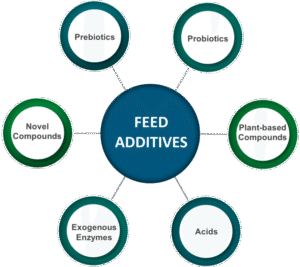Insects, like all living organisms, require nutrients for growth, development, reproduction, and survival. Their nutritional requirements depend on factors such as species, life stage, feeding habits, and ecological niche. While some insects have generalized diets, others are highly specialized and derive their nutrients from specific sources.
Macronutrients Required by Insects
1. Proteins
• Function:
o Building blocks for growth, repair, and enzymatic functions.
o Required for molting (cuticle synthesis) and reproduction.
• Sources:
o Herbivorous insects: Proteins from plant tissues like leaves, pollen, and seeds.
o Carnivorous insects: Prey animals (e.g., spiders, other insects).
o Sap-feeding insects (e.g., aphids): Protein from amino acids in phloem sap, supplemented by symbiotic bacteria.
2. Carbohydrates
• Function:
o Provide energy for metabolic activities such as movement, flight, and thermoregulation.
• Sources:
o Nectar-feeding insects (e.g., bees, butterflies): Sugars from nectar.
o Herbivorous insects: Carbohydrates from plant tissues (e.g., starch, cellulose).
o Carnivorous insects: Glycogen from prey.
3. Lipids (Fats and Fatty Acids)
• Function:
o Energy storage and insulation.
o Essential for the synthesis of cell membranes and hormones.
• Sources:
o Seed-feeding insects: Lipids from oils in seeds.
o Predatory insects: Lipids from prey.
4. Water
• Function:
o Vital for metabolic processes, osmoregulation, and maintaining cell turgor.
• Sources:
o Insects derive water from food (e.g., nectar, fruits, blood) or directly through drinking.
o Some insects absorb water vapor from the air (e.g., desert beetles).
Micronutrients Required by Insects
1. Vitamins
• Insects require vitamins like:
o Vitamin B Complex (e.g., B1, B2, B6): Important for energy metabolism.
o Vitamin E: Antioxidant, essential for reproduction.
• Sources:
o Vitamins are often obtained from plants, prey, or microbial symbionts.
2. Minerals
• Calcium: Required for muscle function and enzyme activation.
• Magnesium: Essential for metabolic enzymes and nerve function.
• Iron: Critical for oxygen transport in hemolymph (if metalloproteins are used).
• Phosphorus: Required for ATP production and exoskeleton hardening.
• Sources:
o Derived from plant tissues, prey, or soil (in detritivorous insects).
Specialized Nutritional Requirements
1. Essential Amino Acids:
o Insects often rely on symbiotic microorganisms to supply amino acids not present in their diet.
o Examples:
Aphids obtain essential amino acids from Buchnera bacteria.
Termites rely on gut protozoa for breaking down cellulose into usable nutrients.
2. Sterols:
o Required for synthesizing ecdysteroids (molting hormones).
o Sources: Plant sterols (e.g., sitosterol) or animal-derived sterols (e.g., cholesterol).
3. Chitin Precursors:
o Chitin, a major component of the exoskeleton, requires N-acetylglucosamine for synthesis.
Dietary Adaptations of Insects
1. Herbivorous Insects:
o Feed on leaves, stems, roots, nectar, or seeds.
o Adaptations:
Mandibles for chewing plant matter.
Symbiotic bacteria for cellulose digestion (e.g., termites).
2. Carnivorous Insects:
o Prey on other insects or small animals.
o Rich in protein and fat.
o Examples: Praying mantises, spiders.
3. Sap-Feeding Insects:
o Feed on plant sap, which is rich in sugars but low in proteins.
o Adaptations:
Symbiotic microbes to supplement amino acids (e.g., aphids, whiteflies).
4. Blood-Feeding Insects:
o Feed on vertebrate blood, rich in proteins and iron.
o Examples: Mosquitoes, ticks.
o Require specific vitamins (e.g., B vitamins) for reproductive success.
5. Scavengers and Detritivores:
o Feed on decaying organic matter or waste.
o Examples: Dung beetles, maggots.
6. Pollinators:
o Derive nutrients from nectar (carbohydrates) and pollen (proteins).
o Examples: Bees, butterflies.
Nutritional Challenges
1. Low-Nutrient Diets:
o Insects like aphids feed on nutrient-poor sap and depend on endosymbionts for survival.
2. Balancing Macronutrients:
o Carnivorous insects need to balance high protein intake with energy needs.
3. Water Scarcity:
o Desert insects (e.g., beetles) use adaptations like water absorption from the air or storing metabolic water.
Artificial Diets for Research and Rearing
• Scientists often formulate specific diets to rear insects in laboratories. These diets mimic natural food and include:
o Proteins (e.g., casein or soy flour).
o Carbohydrates (e.g., sucrose or honey).
o Lipids, vitamins, and minerals.
Thank you for reading. Don't forget to subscribe & share!









